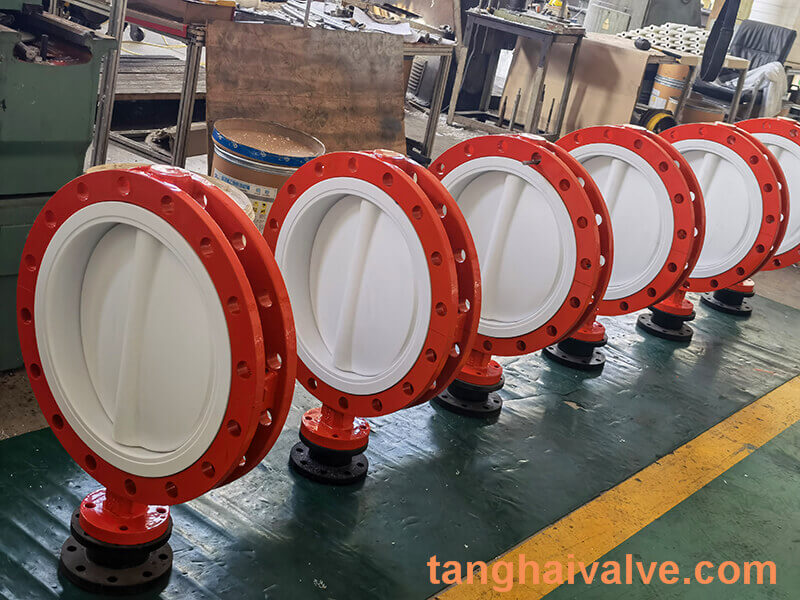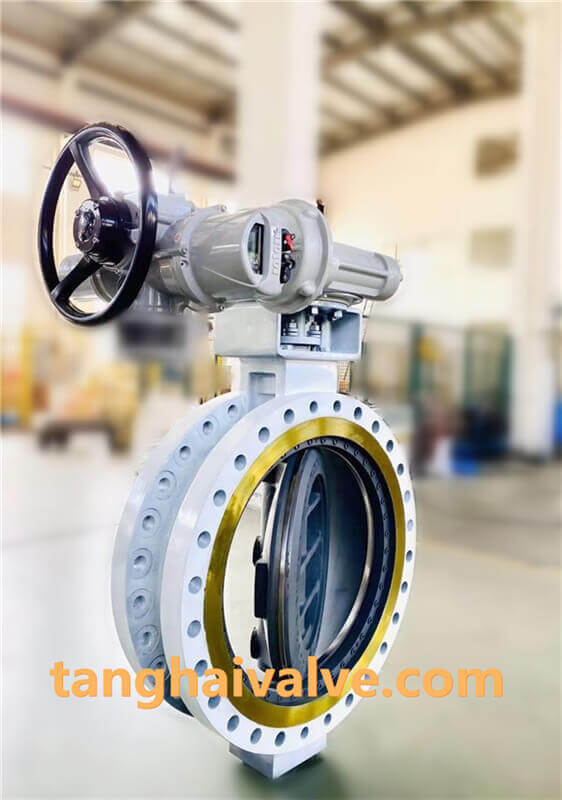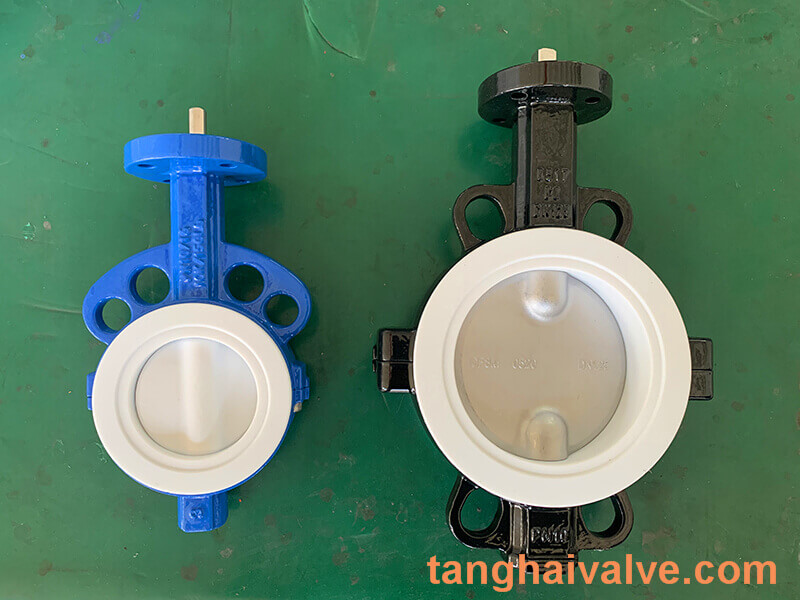Fluorine-lined butterfly valve vs metal seated butterfly valve
The difference and selection of fluorine-lined butterfly valve and metal seated butterfly valve
As one of the most commonly used valves in process pipelines, butterfly valves are not only simple in structure, easy to operate, and equipped with different driving devices, but also can form a variety of control methods, such as electric butterfly valves, hydraulic butterfly valves, pneumatic butterfly valves, etc.! Moreover, butterfly valves are often used in occasions with large caliber and flow. Compared with other valves of the same caliber, the cost can be reduced by 1.5 to 2 times, which is economical and practical!

Fluorine lined butterfly valve-PTFE-DOUBLE FLANGE (2)
According to the different sealing forms of butterfly valves, they can be divided into two categories, one is soft seal and the other is metal seated! The two butterfly valves with different sealing forms play different roles in the relatively used pipelines. In a sense, there are still big differences! When choosing, users should have a detailed understanding and awareness of the difference between the two!
Take the most common soft-sealed fluorine-lined butterfly valves and metal hard-sealed butterfly valves, fluorine-lined butterfly valves are generally used for pipelines containing corrosive media, and the sealing effect can reach zero leakage, but it is only suitable for normal temperature and pressure! The hard-sealed butterfly valve is relatively high in temperature and pressure, but the sealing and corrosion resistance are not as good as the soft-sealed butterfly valve!
1. From the structure: The metal seated butterfly valve refers to the metal material or other harder materials on both sides of the sealing pair. For soft sealing butterfly valves, the two contacting sealing surfaces can be separate or all of soft materials. For example, fluorine-lined butterfly valve means that the butterfly plate and valve seat are both wrapped in PTFE;

triple offset butterfly valve-double flange- (5)
2. In terms of sealing performance: The advantage of the soft-sealed fluorine-lined butterfly valve is that it has good sealing performance, but the disadvantage is that it is easy to age, wear, and has a short service life. The metal seated butterfly valve has a long service life, but the sealing performance is relatively worse than that of the soft seal.
3. From the conditions of use: The soft-sealed fluorine-lined butterfly valve is used in normal temperature and pressure environments, while the hard-sealed butterfly valve can be used in low temperature, normal temperature, high temperature and other environments. Generally, it can be used for higher pressure, but the soft seal is not. However, the fluorine-lined butterfly valve has Super corrosion resistance!
4. From the manufacturing aspect: As for the manufacturing, from the principle point of view, the difference between the two is not big, mainly the difference in the valve seat. The soft-sealed fluorine-lined butterfly valve is a non-metallic structure, and the hard-sealed butterfly valve is a metal structure. It is necessary to consider the metal structure. The relationship between the hardness, the working conditions, what medium is used, and so on.
TH Valve is a professional manufacturer of butterfly valve, gate valve, check valve, globe valve, knife gate valve, ball valve with API, JIS, DIN standard, used in Oil, Gas, Marine industry, Water supply and drainage, fire fighting, shipbuilding, water treatment and other systems, with Nominal Diameter of DN50 to DN1200, NBR/EPDM/VITON, Certificates & Approvals: DNV-GL, Lloyds, DNV, BV, API, ABS, CCS. Standards: EN 593, API609, API6D
Related news /products:
electric fluorine-lined butterfly valve vs electric metal seated butterfly valve;
pneumatic fluorine-lined butterfly valve vs pneumatic hard-sealed butterfly valve;
Classification and selection of fluorine-lined valves;




 © Copyright 2020 Tianjin Tanghaidongyang Valve Co., Ltd. All Rights Reserved.
© Copyright 2020 Tianjin Tanghaidongyang Valve Co., Ltd. All Rights Reserved.